In the digital age, a compelling online presence is as crucial for sports organizations and enthusiasts as a well-executed game plan. Sports websites serve as the central hub for information, engagement, and community, offering everything from live scores and news to merchandise and fan forums. A well-designed sports website not only enhances the user experience but also strengthens brand identity and fosters a loyal following.
Crafting a website that captures the excitement and dynamism of sports requires a thoughtful approach, combining aesthetic appeal with functional efficiency. This article delves into the intricacies of sports website design, exploring its advantages, implementation strategies, essential tips, resource comparisons, real-world use cases, and ultimately, how to achieve a winning online presence.
The Advantages of a Well-Designed Sports Website
A professionally designed sports website offers many advantages, extending far beyond mere information dissemination.
Brand visibility and credibility
A visually appealing and user-friendly website establishes a strong online presence, conveying professionalism and reliability. A well-designed sports website establishes a strong online presence, making the sports organization or entity easily recognizable and memorable.
This enhanced visibility translates to increased fan engagement, as users are more likely to interact with a credible source. Additionally, it opens doors to lucrative sponsorship opportunities, as brands prefer to associate with professional and well-established entities.
Community building and fan engagement.
Sports are inherently social, and a website can serve as a central hub for fan interaction. Features like forums, live chat, and seamless social media integration allow fans to connect with each other and the organization.
This fosters a sense of belonging and shared passion, strengthening the bond between fans and the sports entity. By providing platforms for interaction, the website transforms passive observers into active participants, creating a vibrant and engaging community.
Marketing and revenue generation tool.
A sports website can be a powerful marketing and revenue generation tool. E-commerce integration allows for the direct sale of merchandise, tickets, and memberships, providing a convenient and accessible channel for fans to support their favorite teams or athletes.
Furthermore, advertising and sponsorship opportunities can generate significant revenue streams. By leveraging the website's reach and engagement, sports organizations can attract sponsors and promote their products or services, creating a mutually beneficial partnership.
Provides real-time information and updates
In the fast-paced world of sports, real-time information is essential. A well-designed website provides fans with instant access to live scores, schedules, news, and player statistics. This ensures that fans are always up-to-date with the latest developments, enhancing their engagement and excitement. Push notifications and live feeds are very valuable. This keeps the users returning to the website.
Improves accessibility and user experience
A well-structured website prioritizes user experience, making it easy for visitors to navigate and find the information they need, regardless of their device. Intuitive navigation, clear labeling, and mobile responsiveness are essential for ensuring accessibility.
By providing a seamless and enjoyable user experience, the website encourages visitors to stay longer and return frequently. This improved accessibility extends the reach of the sports entity, allowing it to connect with a wider audience.
How to Design a Winning Sports Website
Designing a successful sports website requires a systematic approach, encompassing several key stages.
1. Define Your Target Audience and Objectives: Begin by identifying your target audience – are you catering to hardcore fans, casual viewers, or a specific demographic? Understand their needs and preferences. Clearly define your website's objectives – is it to provide news, sell merchandise, or build a community? This clarity will guide your design and content strategy.
2. Plan the Website Structure and Navigation: Create a sitemap that outlines the website's structure and hierarchy. Prioritize key information such as the sports schedule and tickets, and ensure intuitive navigation. Use clear and concise labels for menu items and implement a logical flow that allows users to easily find what they are looking for.
3. Design the Visual Identity: Develop a visually appealing design that reflects the spirit of the sport and the brand identity. Choose a color palette that resonates with the target audience and use high-quality images and videos to capture the excitement of the sport. Ensure consistency in typography, imagery, and overall design aesthetics.
4. Develop Content Strategy: Create engaging and informative content that caters to the target audience. This includes news articles, match reports, player profiles, video highlights, and interactive features. Regularly update content to keep the sports website fresh and relevant.
5. Implement Key Features: Integrate features that enhance user experience and engagement, such as:
- Live score updates and match statistics.
- Interactive schedules and calendars.
- Fan forums and discussion boards.
- Social media integration.
- E-commerce functionality for merchandise and ticket sales.
- Video streaming and highlight reels.
- Mobile responsiveness for seamless viewing on all devices.
6. Optimize for Performance and SEO: Ensure the website loads quickly and efficiently. Optimize images and videos for web use and implement caching mechanisms to improve performance. Implement SEO best practices to improve search engine visibility and drive organic traffic.
7. Test and Iterate: Conduct thorough testing to identify and address any usability issues or bugs. Gather user feedback and iterate on the design and functionality to continuously improve the website's performance and user experience.
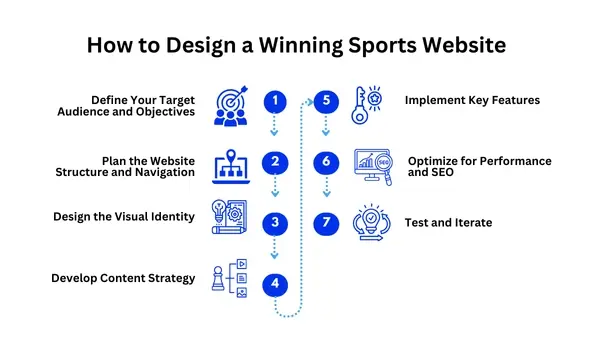
Essential Tips for Sports Website Design
To create a truly exceptional sports website, consider these essential tips:
- Prioritize Mobile Responsiveness
With the majority of users accessing websites on mobile devices, ensuring a seamless mobile experience is paramount. Use responsive design principles to adapt the website's layout and content to different screen sizes.
- Emphasize Visual Content
Sports are inherently visual, so leverage high-quality images and videos to capture the excitement and drama of the game. Use dynamic visuals to engage users and create a visually immersive experience.
- Integrate Social Media
Seamlessly integrate social media platforms to facilitate sharing and engagement. Display social media feeds, implement social sharing buttons, and encourage users to connect with the organization on social media.
- Provide Real-Time Updates
Live scores, match statistics, and news updates are essential for sports fans. Implement real-time data feeds and push notifications to keep users informed.
- Create Interactive Features
Interactive features like polls, quizzes, and fantasy sports leagues can enhance user engagement and create a more immersive experience.
- Ensure Fast Loading Speeds
Users expect sports websites to load quickly. Optimize images and videos, minimize HTTP requests, and use a content delivery network (CDN) to improve loading speeds.
- Focus on User Experience (UX)
Design a sports website that is intuitive, easy to navigate, and visually appealing. Conduct user testing to identify and address any usability issues.
- Maintain Brand Consistency
Ensure consistency in branding across all platforms, including the website, social media, and marketing materials. Use consistent colors, fonts, and imagery to reinforce brand identity of a sports website..
- Implement Robust Security Measures
Protect user data and ensure the sports website's security by implementing SSL certificates, firewalls, and other security measures.
- Analyze and Optimize
Use analytics tools to track website traffic, user behavior, and performance metrics. Analyze data to identify areas for improvement and optimize the sports website accordingly.
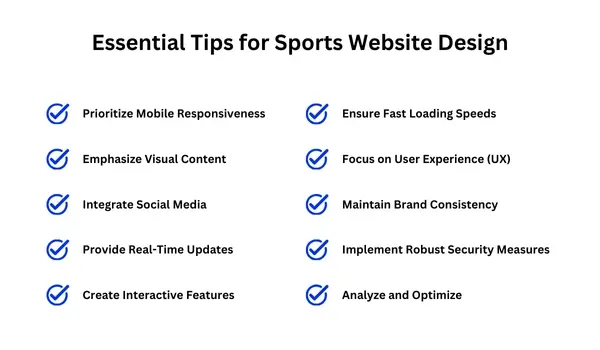
Sport App Resources and Comparison
Several apps and platforms can assist in designing and developing a sports website.
Comprehensive platform for sports organizations, emphasizing integrated management tools alongside website building.
Comprehensive Features:
Integrated registration, payment, scheduling, and roster management.
- Advanced content management and customization.
- Sponsorship and advertising tools.
Dedicated mobile app integration.
Focus: All-in-one sports management and website platform.
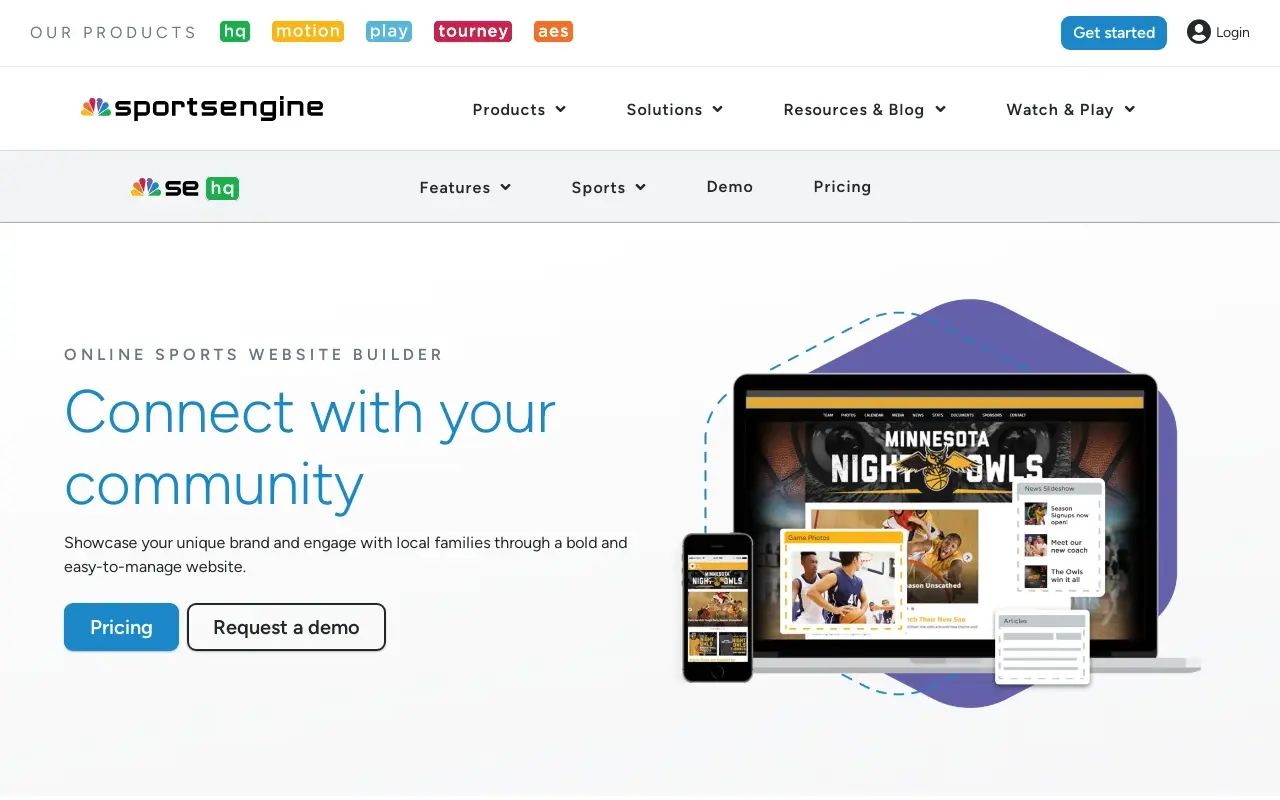
Sports management software with an included website builder, that places high value on communication and ease of use.
Balanced Features:
Website builder, online registration, and communication tools.
- Scheduling, roster management, and payment processing.
Emphasis on communication (email, text, push notifications).
Focus: Sports management with strong communication and website tools.
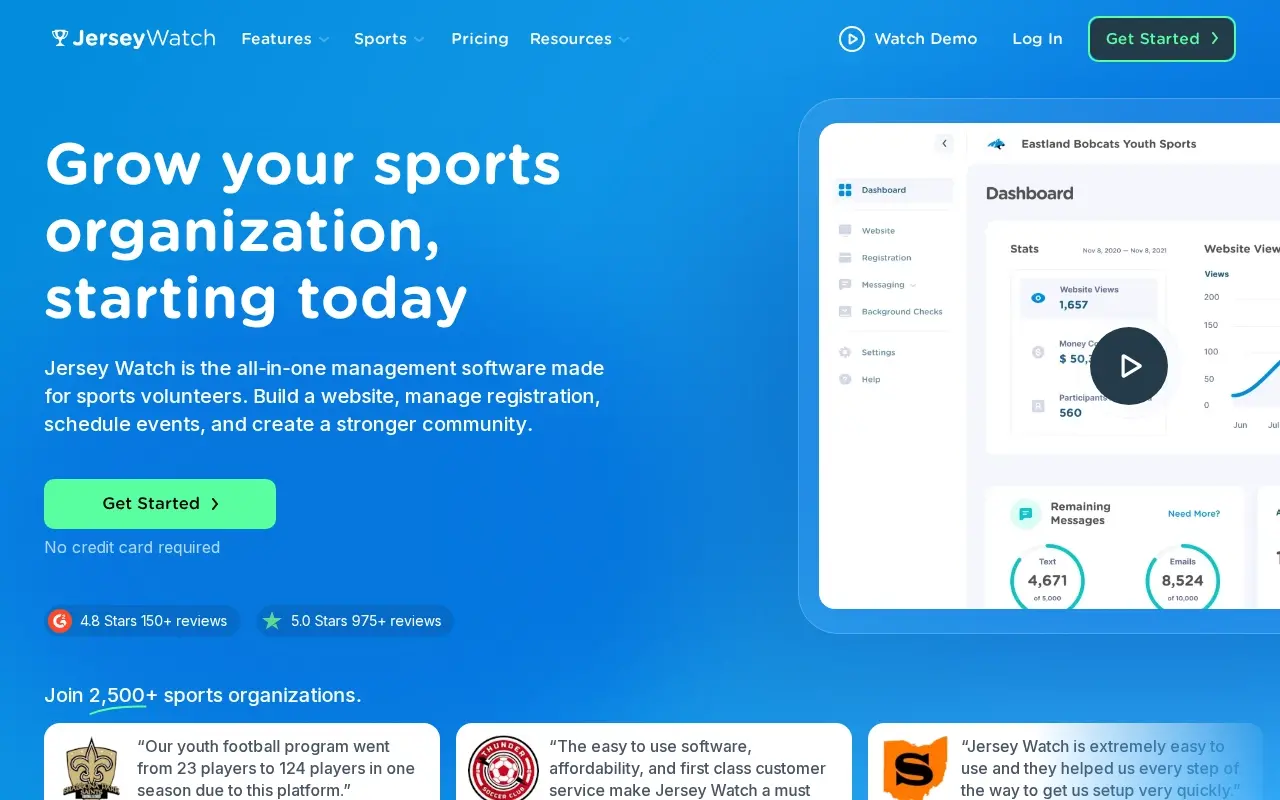
Primarily, it is an extension of TeamSnap's team management platform, aimed at providing a simple website solution for teams already using their services. It is less of a fully featured website creation tool, and more of an add-on to their already existing software.
Simplified Website Creation:
Basic content management and customization.
- Seamless integration with TeamSnap's core features.
- Focus on ease of use.
Focus: Website functionality as an extension of team management.
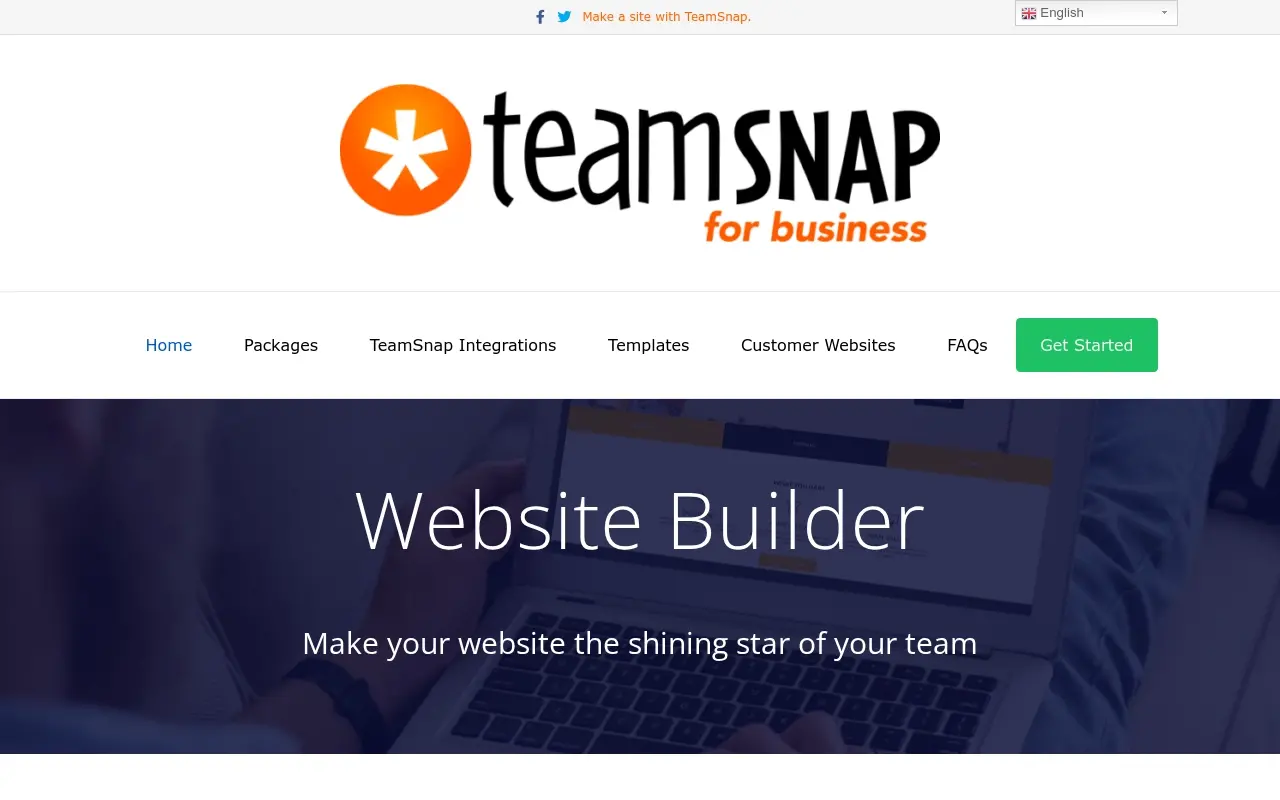
Features Comparison for Sport App Resources
| Feature | SportsEngine | Jersey Watch | TeamSnap |
|---|---|---|---|
| Core Functionality | All-in-one management | Sports management & communication | Team management extension |
| Website Customization | High | Moderate | Low |
| Registration/Payments | Integrated | Integrated | Integrated (via TeamSnap) |
| Scheduling/Rosters | Integrated | Integrated | Integrated (via TeamSnap) |
| Communication Tools | Basic | Strong | Basic (via TeamSnap) |
| Mobile App Integration | Very strong | Mobile-friendly websites. | Through the main TeamSnap app |
| Complexity | High | Moderate | Low |
| Target User | Large Orgs | small to mid size orgs. | smaller teams already using TeamSnap |
Use Cases of Sports Websites Design
- Professional Sports Teams
Websites for professional sports teams provide fans with live scores, match schedules, player statistics, news, merchandise, and ticket sales. They also often include fan forums and social media integration to foster community engagement.
- Amateur Sports Leagues
Websites for amateur sports leagues provide information about league standings, schedules, team rosters, and news. They may also include features for registration and team management.
- Sports News Websites
Websites dedicated to sports news provide up-to-date information on various sports, including match reports, player interviews, and analysis. They often include video highlights and social media integration.
- Sports Training and Coaching Websites
Websites for sports training and coaching provide information about training programs, coaching services, and fitness tips. They may also include video tutorials and online coaching platforms.
- Sports Equipment Retailers
Websites for sports equipment retailers showcase products, provide detailed product descriptions, and facilitate online purchases. They often include customer reviews and ratings.
- Individual Athlete Websites
Individual athletes use websites to showcase their achievements, connect with fans, and promote sponsorships. These sites often include photo galleries, video highlights, and personal blogs.
Conclusion
Whether it's a professional sports team, an amateur league, or an individual athlete, a well-crafted sports website serves as the digital home for the sport, fostering community, driving engagement, and amplifying the passion that fuels the game.
By following the tips and strategies, prioritizing user experience, visual appeal, and real-time information ensures that sport fans stay engaged and connected. Continuously analyzing and optimizing the website based on user feedback and performance metrics is essential for long-term success.
Frequently Asked Questions
How often should I update my church website's design?
We recommend refreshing your website design every 2-3 years to keep it modern and aligned with current trends.
However, regular updates to content and functionality should be ongoing to keep the site relevant.
Is Ubuntu Hosting designed for handling high-traffic websites?
Yes, Ubuntu Hosting offers scalable plans and fine-tuned server setups to accommodate high-traffic demands. It ensures consistent performance even during periods of peak activity.
How can I ensure my website's design remains relevant to evolving web trends?
To ensure your website's design remains relevant to evolving web trends, regularly update its layout, incorporate current design trends, and adapt to user feedback and analytics insights.
Does a website need hosting?
Yes. In order for a site to be accessed by outside users, it needs to have website hosting.

Audee Mirza is a graphic designer and WordPress developer at audeemirza.com who resides in Surabaya, Indonesia. She's also the author of Graphic Identity Blog, a professional logo designer, and often creates vector illustrations for clients and marketplaces. She enjoys good typography design and all kinds of animation.
View all posts by Audee Mirza




















